Van Gogh: Poets & Lovers includes many of his best known pictures and, amazingly, it is the first exhibition the National Gallery has devoted to this much loved artist. Focusing mainly on paintings and drawings made in the two years he lived in Provence (1888-1890), it charts the emotional highs and lows of his stay in the Yellow House in Arles, and the times he spent in hospital after numerous breakdowns.
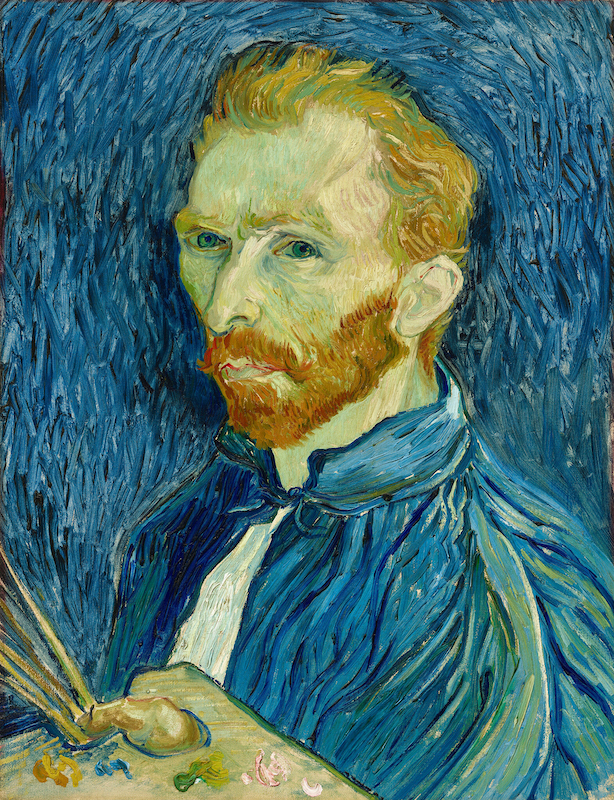 From the incredibly touching and lucid Self-Portrait of 1889 (pictured right), you wouldn’t know he’d just left the psychiatric hospital in St Rémy after recovering from two major crises. He regards his pale face with wary introspection as though checking for any residual signs of distress. The halo of frenzied blue brush marks circling his head suggests that emotional turmoil is still an ever-present threat; for the moment, though, he remains calm and watchful.
From the incredibly touching and lucid Self-Portrait of 1889 (pictured right), you wouldn’t know he’d just left the psychiatric hospital in St Rémy after recovering from two major crises. He regards his pale face with wary introspection as though checking for any residual signs of distress. The halo of frenzied blue brush marks circling his head suggests that emotional turmoil is still an ever-present threat; for the moment, though, he remains calm and watchful.
Evidence of his state of mind is visible everywhere in the work and rarely is there much sense of peace and stability. Van Gogh regarded the Yellow House as a home and a “studio of the south” to be shared with artist friends from Paris. Yet in his painting of it, the building seems to cringe beneath a fierce blue sky, its ochre walls tinged with green that gives it a sickly air. The indoors doesn’t appear more welcoming. Exaggerated perspective makes his bedroom feel distinctly unstable; in this vertiginous space, only the sturdy bed seems to offer safe anchorage. Gauguin joined him for three months in 1888 and, although painted during his stay, Van Gogh’s famous picture of his empty chair (pictured below left) still suggests loneliness and isolation.
The National Gallery’s gorgeous Sunflowers 1888 is joined by another version from the Philadelphia Museum of Art. Van Gogh imagined them hung together on a boat to give solace to homesick sailors. But by emphasising the spiky silhouettes of petals and leaves, he dramatises the apparently tranquil subject until the flowers seem to be doing battle with the surrounding space.
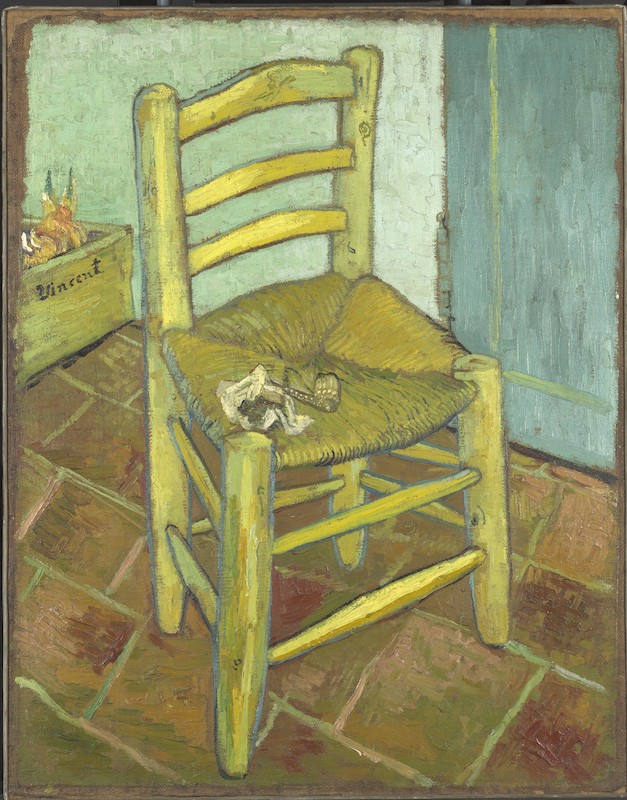 During calmer moments Van Gogh painted the roses in the hospital garden at St Rémy. Against the dense foliage, the pale pink blossoms are like dancing spots of delight; but turmoil seems to resurface in his painting of an iris, its blade-like leaves slicing through the picture space while a cacophony of short brush marks agitate the air around them.
During calmer moments Van Gogh painted the roses in the hospital garden at St Rémy. Against the dense foliage, the pale pink blossoms are like dancing spots of delight; but turmoil seems to resurface in his painting of an iris, its blade-like leaves slicing through the picture space while a cacophony of short brush marks agitate the air around them.
Sometimes euphoria takes hold. In Starry Night over the Rhône 1888 (pictured below), the dark blue water shimmers with golden reflections from the lights of Arles and twinkling stars pepper the midnight blue sky, while the insistent brush marks create a sense of delirium. Elsewhere, the artist burrows into the undergrowth beneath the trees of St Rémy’s unkempt garden. Yet the mood is still optimistic since glimmers of light dapple the constricting ivy and warm sunshine lightens the horizon, as though offering escape from this tangled morass of darkness.
One gallery is devoted to the ink drawings Van Gogh made during 50 visits to Montmajour, a ruined abbey near Arles, and what a brilliant draughtsman he was! To evoke the various textures of brick, stone, rock, soil, grass and leaves he employs an incredible variety of marks and gestures – from feathery strokes to short sharp dabs, long swishes to tiny dots and parallel flicks to brick-like blobs. And to make the nearby rocks stand out from the background he outlines them with emphatic sepia silhouettes.
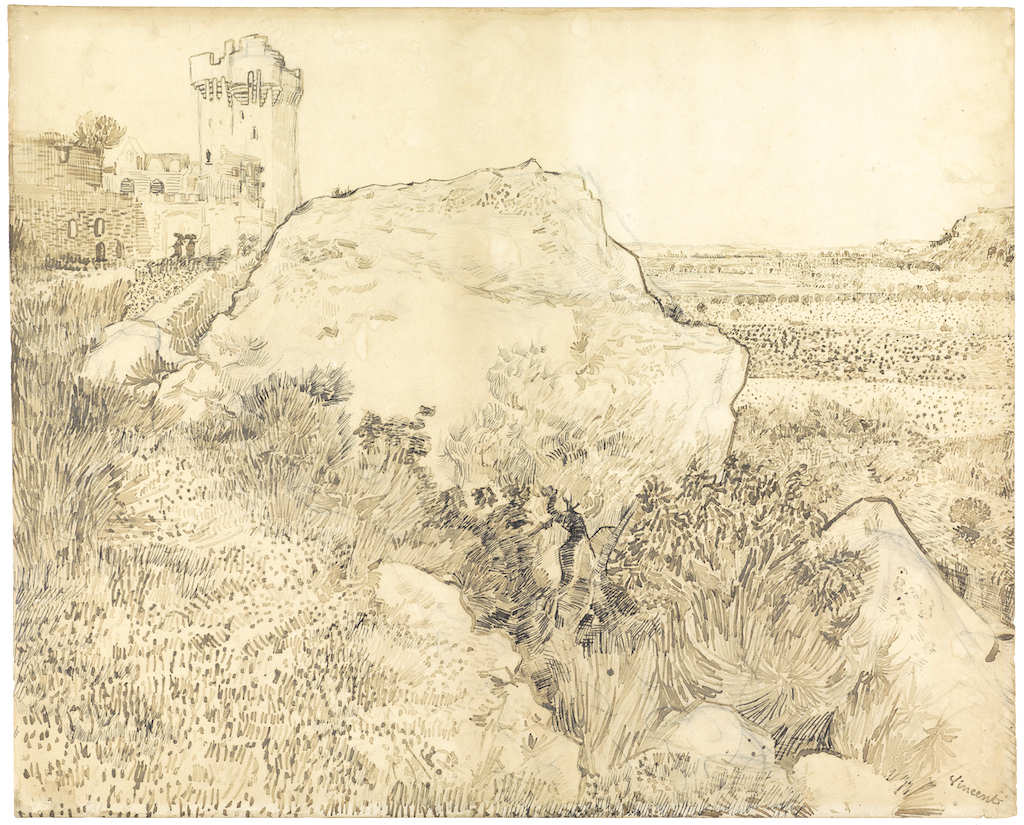 Close-too Hill with Ruins of Montmajour 1888 (pictured right) offers a master class in sublime spontaneity, yet at a distance everything – from nearby rocks to ruined abbey and distant fields – falls into place. The balance between rapid response and clarity of vision is perfect; this is Van Gogh at his most serene.
Close-too Hill with Ruins of Montmajour 1888 (pictured right) offers a master class in sublime spontaneity, yet at a distance everything – from nearby rocks to ruined abbey and distant fields – falls into place. The balance between rapid response and clarity of vision is perfect; this is Van Gogh at his most serene.
Harmony also reigns (just) in the National Gallery’s Wheatfield, with Cypresses 1889, in which the fluidity of rippling corn and scudding clouds is anchored by the dark vertical of two cypress trees. But as restless energy begins to invade every corner of his canvases, such moments of stability become increasingly rare. In The Olive Trees 1889 (main picture), for instance, everything – from earth to trees, mountains and clouds – undulates in frenetic unison as if galvanised by irresistible inner turmoil. And space is flattened so that the distant hills crowd the olive grove and block the view, while clouds tumble across the sky like fiery boulders.
During his last few weeks, the turbulence gripping Van Gogh’s mind goaded him into a frenzy of activity; painting a picture a day, he poured his inner turmoil onto canvases that seethe with violent energy. The spontaneity that energised his wonderful drawings grows ever more extreme; yet the paintings never implode. His grasp of composition was so exceptional that, even while at his most unstable, the pictures hold together.
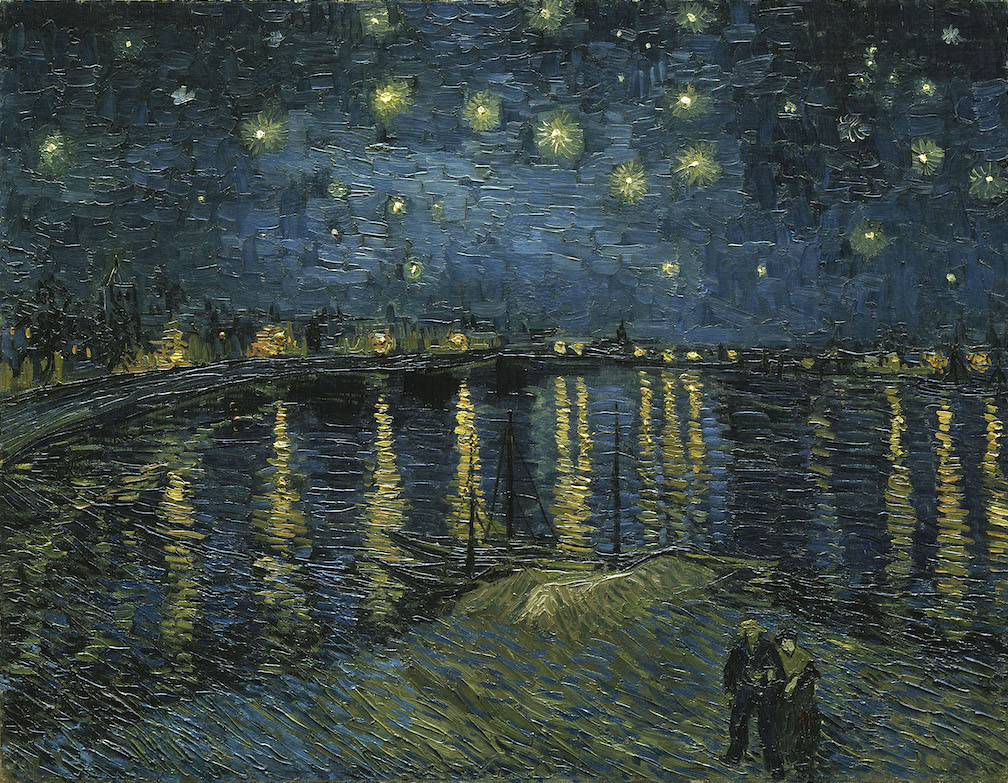 It’s as if, when he felt himself to be unravelling, painting became the means of creating a semblance of order. And even though they are manifestations of a troubled soul, these remarkable last pictures are incredibly exhilarating. Van Gogh: Poets & Lovers may not be a calming experience but, nevertheless, it is uplifting.
It’s as if, when he felt himself to be unravelling, painting became the means of creating a semblance of order. And even though they are manifestations of a troubled soul, these remarkable last pictures are incredibly exhilarating. Van Gogh: Poets & Lovers may not be a calming experience but, nevertheless, it is uplifting.
- Van Gogh: Poets & Lovers is at the National Gallery until 19th January
- More visual arts reviews on theartsdesk

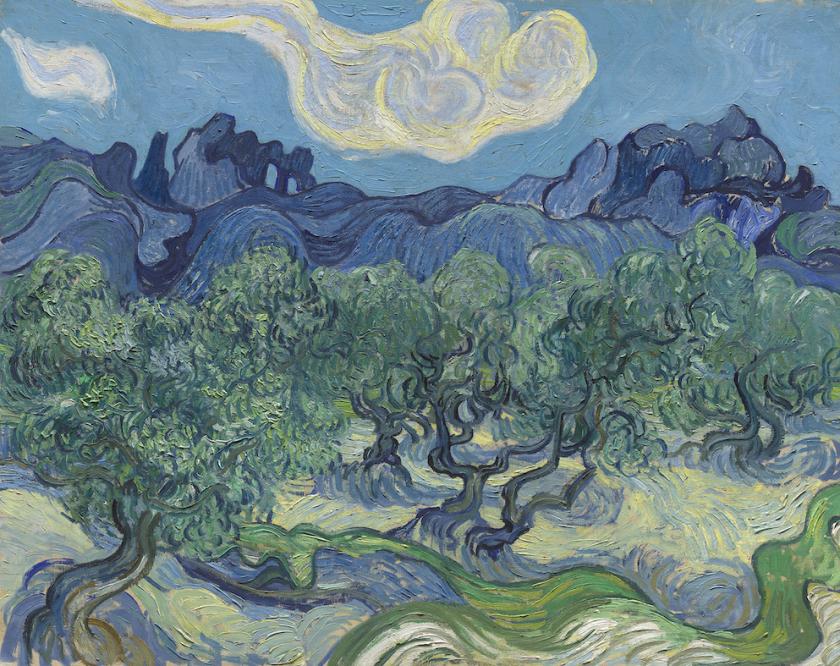








![SEX MONEY RACE RELIGION [2016] by Gilbert and George. Installation shot of Gilbert & George 21ST CENTURY PICTURES Hayward Gallery](/sites/default/files/styles/thumbnail_125_x_125_/public/mastimages/Gilbert%20%26%20George_%2021ST%20CENTURY%20PICTURES.%20SEX%20MONEY%20RACE%20RELIGION%20%5B2016%5D.%20Photo_%20Mark%20Blower.%20Courtesy%20of%20the%20Gilbert%20%26%20George%20and%20the%20Hayward%20Gallery._0.jpg?itok=3oW-Y84i)




Add comment